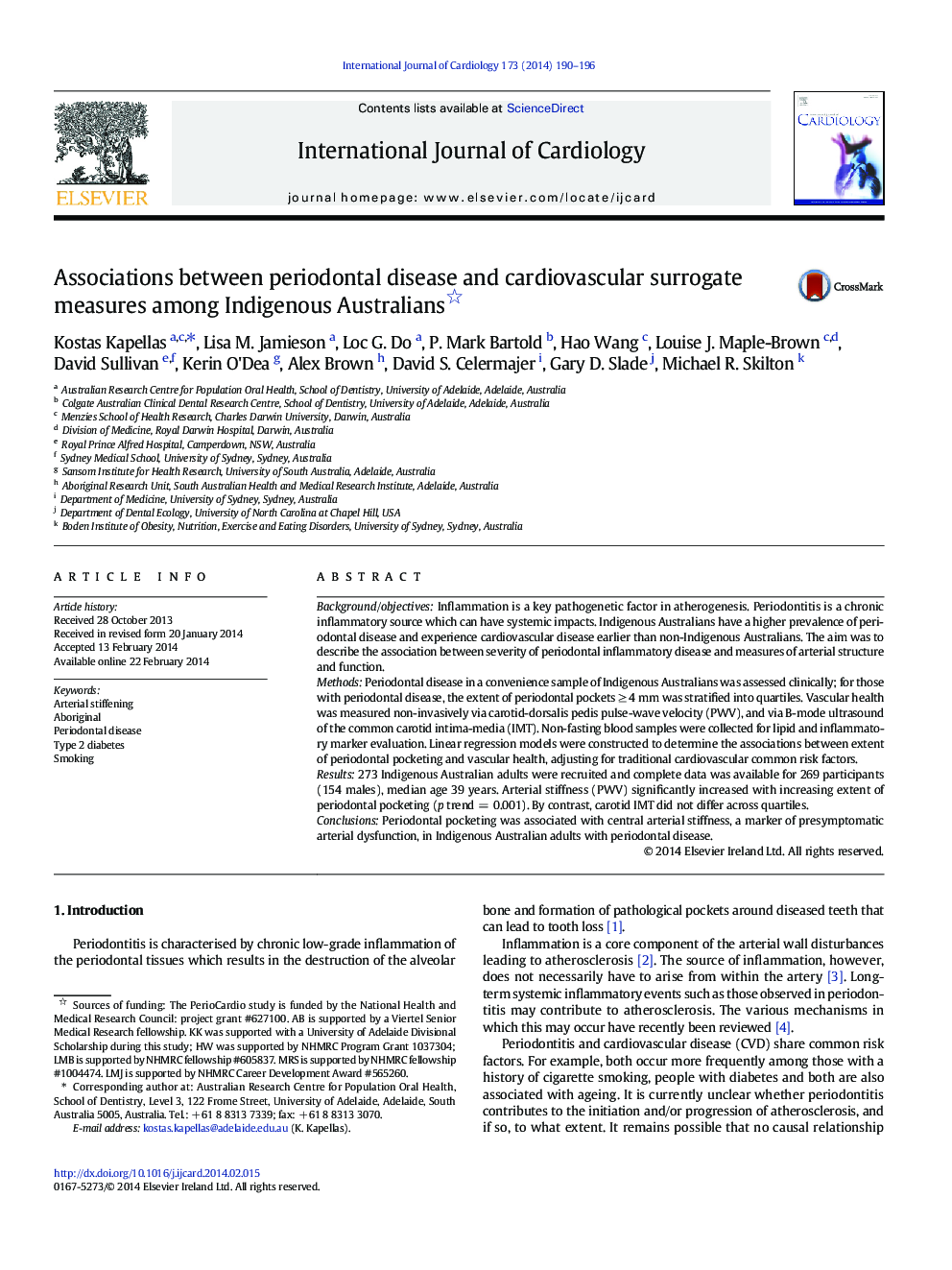| Article ID | Journal | Published Year | Pages | File Type |
|---|---|---|---|---|
| 5972243 | International Journal of Cardiology | 2014 | 7 Pages |
Background/objectivesInflammation is a key pathogenetic factor in atherogenesis. Periodontitis is a chronic inflammatory source which can have systemic impacts. Indigenous Australians have a higher prevalence of periodontal disease and experience cardiovascular disease earlier than non-Indigenous Australians. The aim was to describe the association between severity of periodontal inflammatory disease and measures of arterial structure and function.MethodsPeriodontal disease in a convenience sample of Indigenous Australians was assessed clinically; for those with periodontal disease, the extent of periodontal pockets â¥Â 4 mm was stratified into quartiles. Vascular health was measured non-invasively via carotid-dorsalis pedis pulse-wave velocity (PWV), and via B-mode ultrasound of the common carotid intima-media (IMT). Non-fasting blood samples were collected for lipid and inflammatory marker evaluation. Linear regression models were constructed to determine the associations between extent of periodontal pocketing and vascular health, adjusting for traditional cardiovascular common risk factors.Results273 Indigenous Australian adults were recruited and complete data was available for 269 participants (154 males), median age 39 years. Arterial stiffness (PWV) significantly increased with increasing extent of periodontal pocketing (p trend = 0.001). By contrast, carotid IMT did not differ across quartiles.ConclusionsPeriodontal pocketing was associated with central arterial stiffness, a marker of presymptomatic arterial dysfunction, in Indigenous Australian adults with periodontal disease.
